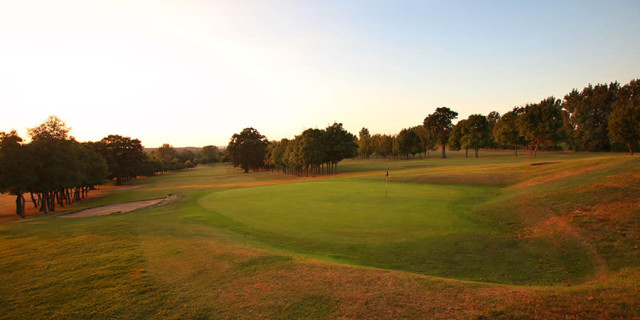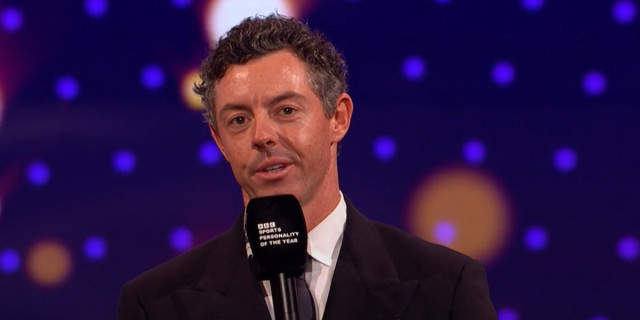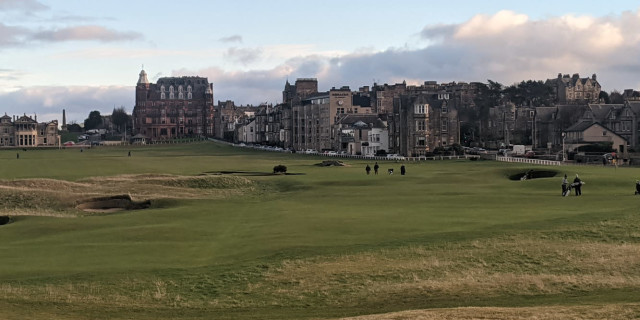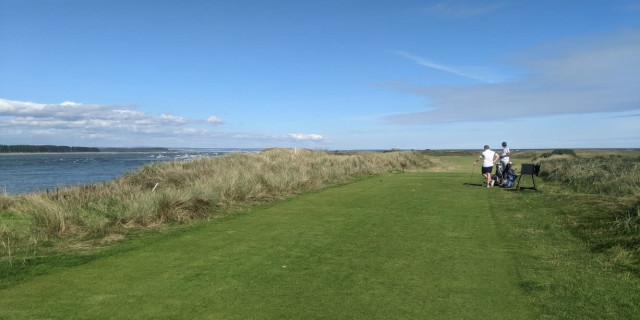
The Greatest Open Championships in History
The could rank among the most memorable Opens in history. But reflecting on that rich history, it's fascinating to see all that has come before. But what are the greatest Championships? I have gone through all 147 of them - picking out two from each decade - that I think best tell the continuing story of the Open.
2016
Reminiscent of the famed Duel of the Sun in 1977 – and more on that later – Henrik Stenson and Phil Mickelson detached themselves from the pack over the final 36 holes at Royal Troon. But it was the big man from Gothenburg who secured his maiden major title. Tied with five holes to play, the Swede birdied four of them to extinguish the chances of Mickelson, setting a new major championship scoring record in the process. J.B. Holmes was a staggeringly distant 14 shots behind in third.
2013
Considered a modern great, one blotch on Phil Mickelson’s record had been his lack of success in the Open Championship, but that all changed over two memorable weeks in Scotland. Having won the Scottish Open at Castle Stuart – the veteran American came to a sun-baked links at Muirfield hopeful of inscribing his name on the Claret Jug, but he started Sunday five off the lead. Producing what he later described as “arguably the best round of my career” the three-time Masters champion shot 66 to usurp a group that included Lee Westwood, Tiger Woods and Adam Scott. Ironically, Henrik Stenson was runner-up. Lefty’s career now felt more complete.
2005
This was an exceptionally atmospheric and meaningful championship in St Andrews. Tiger Woods led wire-to-wire and saw off a challenge from Scotland’s Colin Montgomerie to secure his tenth major title, two days after the legendary Jack Nicklaus brought the curtain down on his storied career with a birdie on the Old Course’s iconic 18th hole. The torch had now been truly passed.
2000
Weeks removed from his 15-shot victory at Pebble Beach, Tiger Woods meticulously picked apart St Andrews and the field to win by eight, completing the career grand slam at the game’s grandest stage. Famously never finding one of the Old Course’s treacherous bunkers – though he did fortuitously bounce over one – no one has played golf better than Woods did at this time.
1999
Carnoustie memorably bared its teeth in 1999, but it was Frenchman Jean van de Velde who stood on the 72nd tee with a three-shot lead. An unforgettable series of shocking mishaps followed, dropping the leader into a playoff with Justin Leonard and Scotland’s Paul Lawrie, who had shot a breathtaking 67 to surge up the leaderboard. The man from nearby Aberdeen held his nerve to become the first Scot to win on home soil since Edinburgh-born Tommy Armour at the same venue in 1931. Remarkable stuff.
1990
Since finishing in a tie for seventh in 1978, Nick Faldo dreamed of winning the Open at St Andrews. It became a career ambition. Carefully laying out his strategy and refining his game to hit the required shots, the Englishman dismissed rival Greg Norman on the Saturday, cruising to a five-shot victory at 18-under par before colourful scenes in the Auld Grey Toun with the crowd standing in the Valley of Sin. Faldo had mastered the Old Course.
1988
Torrential rain pushed the Championship into Monday for the first time, but this final round was worth the wait. Nick Price was leading ahead of former winners Seve Ballesteros, Nick Faldo – who were all grouped together - and Sandy Lyle. It descended into a remarkable duel between the great Spaniard and Price, with Seve ultimately taking the title with an astonishing 65. Seve called it the best round of his life. But it marked the end of an era. This was his fifth and last major victory.
1984
Tom Watson was looking to make history – by completing a hat-trick of titles and equalling Harry Vardon’s record of six – and the great American was leading after 54 holes at St Andrews, tied with a young Ian Baker Finch. Seve Ballesteros had other ideas however, making a crucial par on the Road Hole before making birdie on the last to a jubilant celebration that became iconic. Watson bogeyed the 17th – lost the Championship – and never did win that sixth Claret Jug.
1977
Turnberry was a new venue on the Open rotation, and it was an unforgettable debut in Ayrshire. Tom Watson and Jack Nicklaus were paired together in the third round – months after battling at the Masters – and both shot 65 to pull clear of the field. This duel was to become a mythical event – but it really happened – as they traded blows across the spectacular links, Nicklaus failing to birdie the 17th, handing the advantage to the younger man from Kansas.
Watson’s approach to the final green looked to have sealed the victory – but the Golden Bear made an incredible birdie via a muscled iron from the rough and 35-foot putt – forcing Watson to hole out for victory. “This is what it’s all about, isn’t it?” Watson said. “You bet it is,” Nicklaus replied.
1970
Jack Nicklaus had long dreamed of emulating his hero Bobby Jones to win at St Andrews, and he began the final round tied with Tony Jacklin and the dashing Doug Sanders, two back of Lee Trevino. Tough conditions made the Old Course a difficult proposition – but it was Sanders who was in pole position, missing an agonising three-footer for the win, taking four shots to get down from just 74 yards.
Falling into an 18-hole playoff with Nicklaus the next day, Jack wasn’t going to waste this opportunity. It was a tightly contested round, with the Golden Bear edging it by a shot, inflicting further heartbreak on Sanders.
1969
Britain had long been crying out for another home superstar, and Tony Jacklin had it all. He possessed the look, but he could also play. He finished two ahead of former winner Bob Charles to add his name to the Claret Jug, with Roberto De Vicenzo and Peter Thomson not far away either. Jacklin was the first Briton to win the Open since 1951. He won the U.S. Open a year later.
1960
The Centenary Open came to St Andrews, an event best remembered for the debut of Arnold Palmer, who had won the Masters and U.S. Open that year, with the objective of emulating Ben Hogan’s achievement of winning all three in 1953. It was on this journey that Palmer first talked about the modern Grand Slam – what came to be accepted as the four majors.
The gentlemanly Australian Kel Nagle shattered the headlines by finishing ahead of the American, but the Open had been rejuvenated and changed forever. Palmer won in ’61 at Birkdale and ’62 at Troon, encouraging his compatriots to restore the game’s original championship to their schedules.
1956
Peter Thomson had the game and intellect perfectly suited to the challenges of seaside golf – his record was astonishing. At Royal Liverpool, the 26-year-old from Melbourne won his third consecutive Open – an accomplishment that hasn’t been matched since. He later won again in 1958 and 1965 to secure his place as one of the great champions in history.
1953
The revered Ben Hogan played in just one Open Championship. But the impact of that appearance remains felt today at Carnoustie. Having won the Masters and U.S. Open, the Texan crossed the Atlantic early, with much fanfare in toe. He practiced early at nearby Panmure, making it through the requisite pre-championship qualifying.
Hogan was tied with Roberto De Vicenzo going into the final round on the Championship Course – but shot a stunning 68 to win by four ahead of Antonio Cerda, Dai Rees, Frank Stranahan, and Peter Thomson. He never did return. But his time in Angus wasn’t forgotten.
1948
The refined Englishman Henry Cotton won his third and final Open title at Muirfield. Cotton’s record in the Championship was stunning – 17 top ten finishes in all. And don’t forget that the Open wasn’t played in six of his prime years during the Second World War.
1946
The Open was back following a seven-year hiatus during wartime. Sam Snead made his way to St Andrews by train – and was bemused by the sight of the rugged links of the Old Course. Nonetheless, the American won the Championship by four shots. But he didn’t return until 1962.
1932
Gene Sarazen was a regular visitor to the Open at this time, but his one victory came at Prince’s Golf Club in 1932, where he led wire-to-wire. Two weeks later in New York, Sarazen won the U.S. Open and joined Bobby Jones as the only players to win both the Open and U.S. Open in the same year.
1930
The game’s greatest amateur won his final Open at Royal Liverpool. Bobby Jones had earlier won the Amateur at St Andrews, before returning across the Atlantic to win the U.S. Open and U.S. Amateur, completing the Grand Slam, signalling his retirement from competitive golf at 28.
1927
Famously walking off the Old Course in disgust in 1921, Bobby Jones returned to St Andrews and made amends by winning his second Open by six shots. He later won the Amateur Championship here in 1930 on route to completing his legendary Grand Slam. Jones later said of the famous town: “I could take out of my life everything except my experiences at St Andrews and I would still have a rich, full life.”
1922
St Andrews born American citizen Jock Hutchison had won the Claret Jug in his hometown in 1921, but a year later Walter Hagen became the first American-born golfer to win the Open Championship. The charismatic Hagen later won again in 1924, 1928 and 1929.
1914
The First World War was imminent – and with it the Championship would go on hiatus – but the 1914 edition saw the conclusion of Harry Vardon’s remarkable success, his sixth title, beating J.H. Taylor by three at Prestwick.
1910
James Braid won his fifth and final Open Championship at St Andrews. He then became renowned for his golf course designs. These included the King’s Course at Gleneagles, the remodelling of Carnoustie’s Championship Course, Perranporth and St Enodoc.
1904
James Braid and J.H. Taylor were two of the most dominant figures in the game, but that status was shattered by Scotland’s Jack White who shot a final round of 69 at Sandwich – a remarkable score for his day – to finish one shot ahead of those two more famous contemporaries. Taylor himself posted a 68 in the fourth round – another Open record – as was White’s winning total of 296.
1903
Securing his fourth title, Harry Vardon shot all four rounds in the 70s at Prestwick – setting a total of 300 – to finish six ahead of his younger brother, Tom, illustrating that the familial connections in the Open weren’t just limited to the Morris’ and Parks’.
1896
Harry Vardon is remembered for being a six-time winner of the Open Championship – a record that is unlikely to be equalled. His first came at Muirfield in 1896 when he overcame the formidable challenge of J.H. Taylor in a playoff.
1894
Reflecting the growing popularity of the game in England – and wins of John Ball and Harold Hilton - the Championship headed south of the border for the first time at St George’s, where one of the game’s true pioneers John Henry Taylor won his first Open.
1887
Following in the footsteps of his father – who won the inaugural Championship - Willie Park Jr won his first Open at Prestwick. He later became an accomplished writer and golf course designer – creating the likes of Sunningdale Old and many layouts in the United States and Canada.
1882
Musselburgh’s Bob Ferguson won his third consecutive championship at St Andrews, repeating the run of Jamie Anderson. It would be 74 years until that was matched by Peter Thomson in 1956.
1873
Leaving Prestwick for the first time, the Open was played across the St Andrews Links, won by local player Tom Kidd, who holds the distinction of being the first golfer to be officially presented with the Claret Jug – the Champion Trophy. This was the first Open held over two rounds of 18 holes. St Andrews and Musselburgh joined Prestwick on this original rotation for two decades, with only the Old Course still retaining that status in the 21st century.
1870
Young Tom Morris – 19-years-old – played to a level that defied conventional wisdom. His skill mesmerised thousands who watched him play – and his 1870 win – by 12 shots indeed – was a third on the spin. Consequently, he was permanently awarded the Challenge Belt. Now without a trophy, Prestwick invited the Royal & Ancient in St Andrews and Honourable Company of Edinburgh Golfers at Musselburgh to jointly run the Championship and fund a new prize. The Claret Jug was soon created.
1867
For many, Tom Morris Sr – Old Tom – is considered the father of the modern game, but the eighth Championship at Prestwick was to be his last victory, beating his old foe Willie Park. Soon it was Young Tom who would take the mantle. At 46, Old Tom remains the oldest winner of the Open.
1860
Attempting to identify the successor Champion Golfer to the late St Andrews professional Allan Robertson – the undisputed player of his day – Prestwick Golf Club invited elite players from across the land to compete. Eight turned up. Playing three loops of 12 holes – Willie Park Sr finished two shots ahead of Tom Morris Sr. The Championship we now call The Open was born.
About the author

Kieran Clark is the Digital Editor of Golfshake. He oversees editorial content, community engagement, forums, and social media channels. A lifelong golfer from the Isle of Bute in Scotland who has now lived in St Andrews for a decade, he began playing at the age of five and maintains a passion for exploring courses, with a particular affection for historic layouts. Kieran regularly contributes in-depth opinion pieces and features, drawing on his enthusiasm for the game and its culture.

The oldest & most prestigious major, a trip to The Open is a must for every golf fan. From tickets and transfers to hospitality & golf, Golfbreaks.com can build the perfect package to help you experience The Open in style.
Tags: The Open









